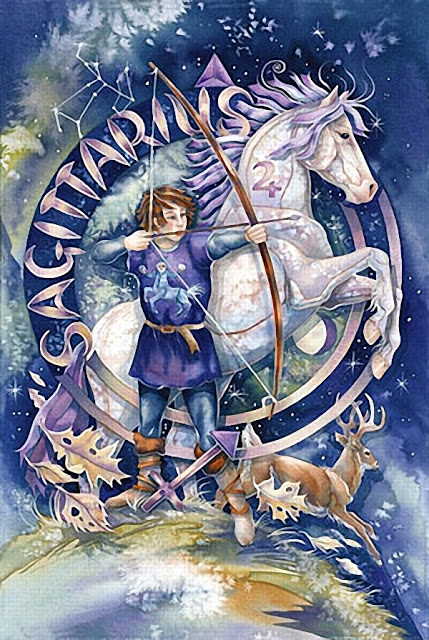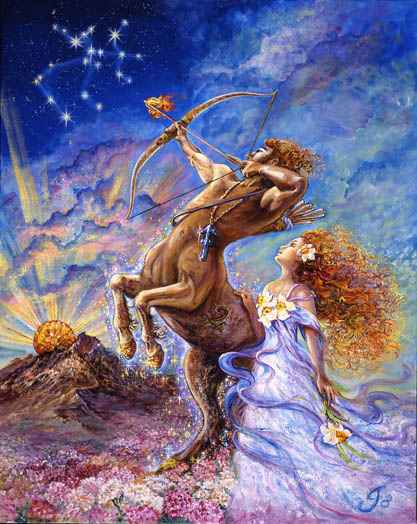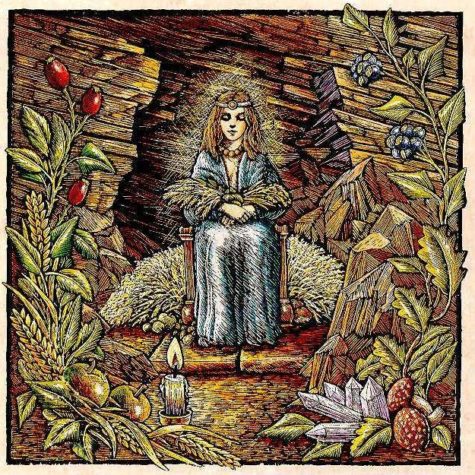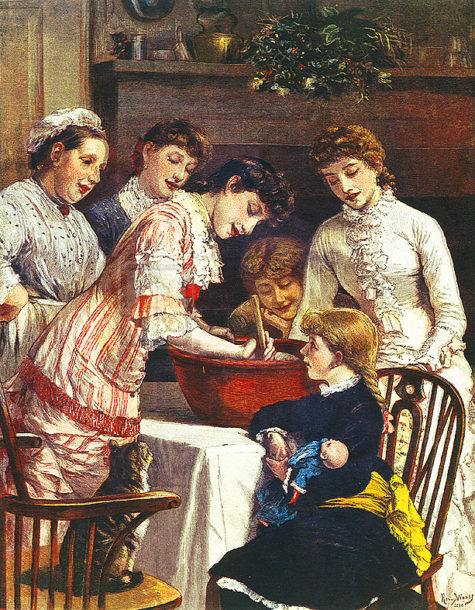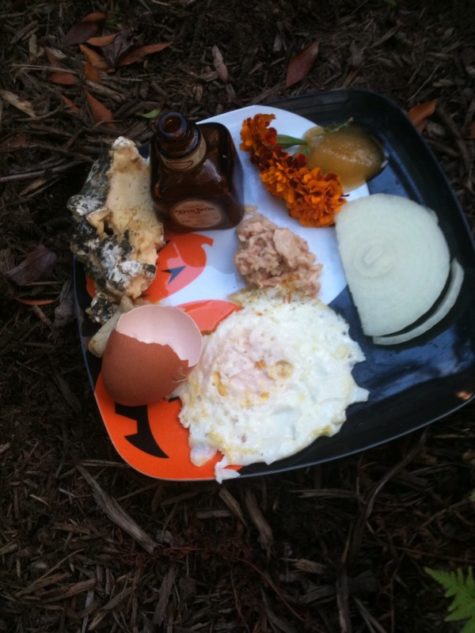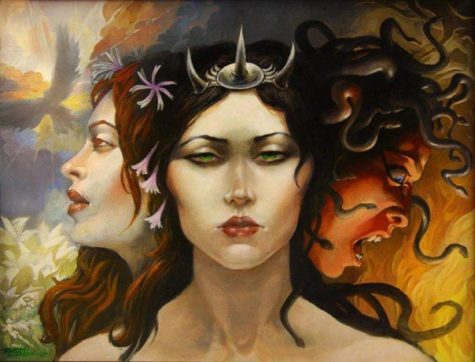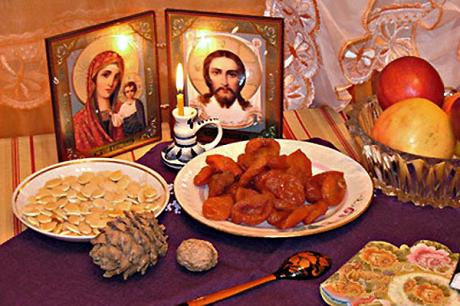November
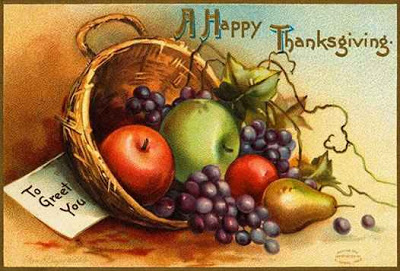
Thanksgiving Day is a national holiday celebrated in Canada and the United States. It was originally celebrated as a day of giving thanks for the blessing of the harvest and of the preceding year. Thanksgiving is celebrated on the second Monday of October in Canada and on the fourth Thursday of November in the United States. Several other places around the world observe similar celebrations. Although Thanksgiving has historical roots in religious and cultural traditions, it has long been celebrated in a secular manner as well.
This is the perfect time of year for everyone around the world to be thankful for what they’ve been given.
- Sit quietly for a few minutes in complete silence. It’s best if you’re alone, and you close your eyes. Remove all problems from your thoughts for a moment. Push everything aside.
Then… think about what you DO have:
- Are you breathing? Yes, you are. Be thankful that you’ve been given LIFE…the biggest miracle of all.
- Do you have loved ones? Be thankful that they are in your life.
- Do you have a roof over your head – even if it’s hard to pay for? Be thankful for that… many people don’t.
- Are you starving? No? Be thankful that you have food to eat. There are millions starving around the world that would love to have some food from your cupboard.
Think for a moment how lucky you are to be alive… even if it’s not always easy.
Sagittarius is the ninth sign of the zodiac. The sun enters Sagittarius at slightly different times each year, usually around Nov 22, sometimes the day before or the day after.
- Symbol: Archer
- Element: Fire
- Gemstone: Amethyst
- Key word: I See
Sagittarians are friendly, open, optimistic people with a positive, enthusiastic approach to life. They are honest and loyal, but have a tendency to be outspoken at times. They are independent people who enjoy having room and space around them. Consequently, they are frequently interested in sports and travel.
From 365 Goddess, we have this for today:
Themes: Creativity; Energy; Communication; Balance; Harmony; Change
Symbols: Bow and Arrow; White Items; Milk; Seawater
Presiding Goddess: Leucothea
In Greek tradition, this woman gave birth to the centaurs and was a wet nurse to Dionysus. Her name translates as “milk-white goddess,” alluding to a strong maternal nature. In later times she became a sea goddess, bearing the visage of a mermaid. Through this transformation we see the mingling of the spiritual nature (water) with that of the earth (half-human appearance) to create Sagittarius’s customary energies.
To Do Today:
In astrology, Sagittarius is the centurion archer who represents a harmonious mingling of physical and spiritual living. Those born under this sign tend toward idealism, upbeat outlooks, and confidence. Like Leucothea, Sagitrarians seem to have a strong drive for justice, especially for those people under their care.
To consume a bit of Leucothea’s maternal nature or invoke her spiritual balance in your life, make sure to include milk or milk products in your diet today. Or, wear something white to figuratively don her power.
For help with personal transformations, especially those that encourage personal comfort and tranquility, soak in a nice long saltwater or milk bath today. As you do, ask Leucothea to show you the right steps to take next.
More About the Sun in Sagittarius:
The Sun is in Sagittarius from November 23 to December 21, depending on the year.
- Ruler: Jupiter
- Season: Fall
- Modality: Mutable
- Metal: Tin
- Stone: Topaz
- Color: Turquoise
- Flowers: Narcissus; Chrysanthemum;
- Anatomy: Hips, Thighs, Muscles
- Attributes: optimistic, restless, enthusiastic, adventurous, honest, irresponsible, outspoken, independent
Restless, cheerful, and friendly, Sun in Sagittarius people are generally on the go. They have a love of freedom, and a disdain for routine. Generally quite easygoing, Sagittarians make friends with people from all walks of life. They love to laugh and tease, and get along well with both sexes.
Sagittarians have an often blind faith in people, and in the world. Their optimism is infectious, although it can get them into trouble from time to time. These are curious people who love to learn. Their idealistic nature is hard to miss.
Although generally easygoing, Sagittarius is a fire sign. This gives natives a generally quick temper. Fortunately, they’re usually as quick to forget what got them angry in the first place.
The need for escape is generally strong, and some Solar Sagittarians come across as a little irresponsible. They’re generally easy to forgive, however. After all, their direct, honest approach in life is admirable.
Source: Cafe Astrology
Eriskegal, great black mother of the House of Dust,
you who wait at the end of every life,
cast your dim black gaze upon the just
and, blinking once, give them rebirth.
While November is the eleventh month on modern calendars, it was once the ninth, as evidenced by the Latin number novem. In the United States, November contains one of the oldest national holidays – Thanksgiving.
Actually, festivals of gratitude combine with late harvest festivals in many parts of the world; at this time people pray for divine providence and give thanks for the earth’s bounty. Other predominant festivals during early winter months include commemorative rites for the dead and rituals that protect individuals or whole communities from evil influences.
For people living in four-season climates, the snows begin to accumulate and winter winds decorate the windows with frosty reminders of the outside chill. Because of this, magic for continued health is fitting during November, as are spells and charms for protection.
Wintery months also seem to be a time for introspection – to us divination tools for foresight and preparation, to seek guidance within, and to ask the Goddess for a special spiritual vision to carry us through the last months of the year.
Source: 365 Goddess
Image from: 2008 Witches Calendar
Stir-up Sunday is an informal term in Anglican churches for the last Sunday before the season of Advent. It gets its name from the beginning of the collect for the day in the Book of Common Prayer, which begins with the words, “Stir up, O Lord, the wills of thy faithful people”. But it has become associated with the custom of making the Christmas puddings on that day.
Why not blend the best of both worlds? Invoke the Goddess Hestia’s blessing in your kitchen and make some pudding for the whole family (or a gathering of friends). Traditionally, families gather together in the kitchen of their homes to mix and steam Christmas pudding on Stir-up Sunday. Parents taught their children how to mix ingredients for the pudding. Everyone took a turn to stir the pudding mix for each person involved is able to make a special wish for the year ahead. Practically, stirring the mixture is hard work, therefore as many as possible are involved.
By tradition the pudding mixture is stirred from East to West in honor of the three wise men who visited the baby Jesus.Have each person present stir the pudding clockwise for a few minutes as they focus on a wish. By next year at this time, the wish should manifest.
It was common practice to include small silver coins in the pudding mixture, which could be kept by the person whose serving included them. The usual choice was a silver threepence or a sixpence. The coin was believed to bring wealth in the coming year. Other tokens are also known to have been included, such as a tiny wishbone (to bring good luck), a silver thimble (for thrift), or an anchor (to symbolise safe harbour).
On a historical note:
The Christmas pudding is one of the essential British Christmas traditions and is said to have been introduced to Britain by Prince Albert, husband of Queen Victoria (the reality is that the meat-less version was introduced from Germany by George I in 1714.). Most recipes for Christmas pudding require it to be cooked well in advance of Christmas and then reheated on Christmas day, so the collect of the day served as a useful reminder.
About Hestia:
The Greek goddess of household affairs, Hestia watches over our cookery today to help manifest family unity and ensure tasty outcomes. As a hearth goddess, she provides the spiritual energy necessary to keep our faith sure and the inner fires burning bright. Greek art did not try to portray this goddess, because she was considered the beginning – the source from which all else was ignited and set in motion.
Light a candle this morning to welcome Hestia’s unity and energy into your home. Or, carry matches in your pocket so the spark of this goddess can ignite in any situation where it’s needed. Throughout the day, when you need more commitment to your beliefs, just light one match to invoke Hestia’s aid.
Collected from various sources
For modern Wiccans and Neo-Pagans, Nov 16 is designated as Hekate Night, or the Night of the Crossroads, the day of the festival of Hecate Trivia, which is a day that honors Hecate as a goddess of crossroads.
Her feast day begins at sunset, and most often consists of a feast referred to as Hekate Supper, A meal to which Hekate is invited, and given her own plate of food, which is then left at a crossroads.
This practice, particularly associated with the sacred three-way crossroads of Hekate, is the depina Hekates, or Hekate Supper. It may be that these offerings were made to appease ghosts and keep them at the crossroads, avoiding trouble from them whilst traveling etc. Alternatively these offerings were described as being made to placate the goddess and ensure that she would look favorably upon those who made regular offerings.
- More about Hekate Suppers here: Night of Hekate Suppers
- Invocations and prayers to Hekate: Widdershins
- Spells and Magick: Book of Shadows
- About the Goddess: The Powers That Be
It has been suggested that the crossroads was sacred to Hekate due to her having been abandoned at a crossroads as a baby by her mother Pheraea, and then rescued and brought up by shepherds. This Thessalian tale comes from a scholiast to Lycophron’s 3rd century BCE play Alexandria, and was a late invention.
Aristophanes recorded that offerings to Hekate were made “on the eve of the new moon” which is when the first sliver of the new moon is visible, signifying a possible connection with Hekate as a lunar goddess, rising, like the moon, from the underworld on the night of the new moon.
There are also references to the offerings being made on the thirtieth day of the month, but keep in mind that this was calculated on the Greek calendars, it would vary from state to state as there was no uniformity in the calendar system being used.
It has further been suggested that the offerings made at the Hekate Suppers were a form of charity, and certainly the consumption of the food by the poor was noted by Aristophanes (5th century satirist):
“Ask Hekate whether it is better to be rich or starving; she will tell you that the rich send her a meal every month and that the poor make it disappear before it is even served.”
The 10th century Byzantine encyclopedia, the Suda, paraphrased this quote and added the following:
“From her one may learn whether it is better to be rich or to go hungry. For she says that those who have and who are wealthy should send her a dinner each month, but that the poor among mankind should snatch it before they put it down. For it was customary for the rich to offer loaves and other things to Hekate each month, and for the poor to take from them.”
Various sources mention different foods offered to Hekate at the suppers. These were:
- Magides – A type of loaf or cake
- Mainis – Sprat
- Skoroda – Garlic
- Tigle – Mullet
- Psammeta – Sacrificial cake somewhat like the psaista
- Oon – Eggs (raw)
- Tyros – Cheese
- Basunias – A type of cake
Another type of food offering which was left to Hekate on the eve of the full moon was the amphiphon, a type of cake. Amphiphon means “light-about,” an appropriate name for this flat cheesecake which was surrounded by small torches.
The supper, or leaving of offerings at the crossroads was one of the hardest practices for the Christian church to stamp out. Records indicate it was still taking place in the 11th century CE, and it may well have continued far longer.
About Hekate
She is the Triple Goddess, and most often associated with a three-way crossroad. She is Hecate the Maiden, Hecate the Mother, and Hecate the Crone. Although the dark of the moon is her traditional time, Hecate can be called upon during any moon phase, as She is the One and the Three.
She is the goddess of witchcraft, the night, the new moon, ghosts, necromancy and crossroads. Hekate had few public temples in the ancient world, however, small household shrines, which were erected to ward off evil and the malevolent powers of witchcraft, were quite common.
She is a Goddess like no other. A goddess who is not to be invoked lightly, or by those who are calling upon her frivolously. Some describe her as a Witch Goddess who rises up from the dark depths of the underworld, whilst others tell of a bright shining Goddess who holds her torches of illumination high, revealing the path through the mysteries, but only for those with the wisdom to follow her.
Some say that she is the Axis Mundi, the Chaldean World Soul and that she brings soul fire and light to humanity. Others tell of a powerful Goddess who is crowned with the coils of wild serpents and oak leaves, appearing with three heads, often with three bodies, sometimes in forms which are part-human and part-beast. We are told that she holds sway in many worlds, bearing the keys to the thresholds between, guarding and blessing those who make suitable offerings to her, but feared by those who let injustice come upon the world.
Hekate stands at the crossroads bearing the keys to the mysteries. In the ancient world she inspired poets and philosophers, witches, magicians and ordinary people, all of whom knew she could bestow blessings to improve their lot and protect them from the harsh denizens of the infernal realm. Today she continues to inspire and evoke awe in those who encounter her; for some in subtle ways, leading them in an elusive nameless manner with her symbols, for others in a more powerful and directly empowering way.
Sources:
The Nativity Fast is a period of abstinence and penance practiced by the Eastern Orthodox, Oriental Orthodox, and Eastern Catholic Churches, in preparation for the Nativity of Jesus, (December 25).
This is a joyous fast in anticipation of the Nativity of Christ. That is the reason it is less strict than other fasting periods. The fast is divided into two periods. The 1st period is November 15th through December 19th when the traditional fasting discipline (no meat, dairy, fish, wine, and oil) is observed.
There is dispensation given for wine and oil on Tuesdays and Thursdays. Similarly, fish, wine, and oil are permitted on Saturdays and Sundays. The 2nd period is December 20th through 24th when the traditional fasting discipline (no meat, dairy, fish, wine, and oil) is observed. There is dispensation given for wine and oil only on Saturday and Sunday during this period. Here are the guidelines:
- Meat – Abstain
This includes: beef, chicken, pork, turkey, elk, veal, lamb, deer, rabbit, buffalo, and so forth
- Dairy – Abstain
This includes milk, eggs, cheese, butter, yogurt, cream, and so forth
- Fish – Permitted only on Saturdays and Sundays before December 20.
This includes fish with a backbone, but does not include shrimp, octopus, shellfish, squid, or other seafood. Note: (some permit fish Tuesdays and Thursdays also)
- Wine – Permitted only on Tuesdays, Thursdays, Saturdays, and Sundays before December 20.
Some include all types of alcohol in this category.
- Oil – Permitted only on Tuesdays, Thursdays, Saturdays, and Sundays before December 20.
Abstinence includes refraining from the food and drink mentioned above, as well as from smoking. The Eucharistic Fast means abstaining from at least the previous midnight for communing at a morning Liturgy.
The Purpose of Fasting
The purpose of fasting is to focus on the things that are above, the Kingdom of God. It is a means of putting on virtue in reality, here and now. Through it we are freed from dependence on worldly things. We fast faithfully and in secret, not judging others, and not holding ourselves up as an example.
Fasting in itself is not a means of pleasing God. Fasting is not a punishment for our sins. Nor is fasting a means of suffering and pain to be undertaken as some kind of atonement. Christ already redeemed us on His Cross. Salvation is a gift from God that is not bought by our hunger or thirst.
- We fast to be delivered from carnal passions so that God’s gift of Salvation may bear fruit in us.
- We fast and turn our eyes toward God in His Holy Church.
- Fasting and prayer go together.
- Fasting is not irrelevant.
- Fasting is not obsolete, and it is not something for someone else.
- Fasting is from God, for us, right here and right now.
- Most of all, we should not devour each other.
- We ask God to “set a watch and keep the door of our lips.”
Do NOT Fast
- Between December 25 and January 5 (even on Wednesdays and Fridays);
- If you are pregnant or nursing a newborn;
- During serious illness;
- Without prayer;
- Without alms-giving;
- According to your own will without guidance from your spiritual father.
Source: Antiochian
What follows is a list (in alphabetical order) of the names given to the November moon. Also listed is the tradition and/or origin of that moon name:
- All Gathered Moon ~San Juan, Native American
- Beaver Moon, ~Algonquin, Native American, Colonial
- Corn Harvest Moon ~Taos
- Dark Moon ~other
- Dead Moon ~Janic (dark)
- Deer Antler Shedding Moon ~other
- Deer Rutting Moon ~Cheyenne
- Falling Leaves Moon ~Sioux
- Fog Moon ~other
- Fledgling Raptor Moon ~Hopi
- Freezing River Moon ~Arapaho
- Frosty Moon ~Algonquin, Native American, Colonial
- Geese Going Moon ~Kiowa
- Itartoryuk Moon ~Inuit
- Mad Moon ~other
- Mourning Moon ~Janic (full)
- Oak Moon ~other
- Poverty Moon ~Mohawk
- Snow Moon ~Mediaeval English
- Snowy Morning Mountains Moon ~Wishram
- Storm Moon ~other
- Trading Moon ~Cherokee
- Tree Moon ~Neo Pagan
Source: Everything Under The Moon
The Leonids is an average shower, producing up to 15 meteors per hour at its peak. This shower is unique in that it has a cyclonic peak about every 33 years where hundreds of meteors per hour can be seen. That last of these occurred in 2001. The Leonids is produced by dust grains left behind by comet Tempel-Tuttle, which was discovered in 1865. The shower runs annually from November 6-30. Best viewing will be from a dark location after midnight. Meteors will radiate from the constellation Leo, but can appear anywhere in the sky.
Source: SeaSky
The Taurids is a long-running minor meteor shower producing only about 5-10 meteors per hour. It is unusual in that it consists of two separate streams. The first is produced by dust grains left behind by Asteroid 2004 TG10. The second stream is produced by debris left behind by Comet 2P Encke. The shower runs annually from September 7 to December 10. Best viewing will be just after midnight from a dark location far away from city lights. Meteors will radiate from the constellation Taurus, but can appear anywhere in the sky.
Source: SeaSky
 Feronia is a Latin goddess who was honored with the first fruits of the harvest in a Thanksgiving type of ritual thought to ensure a bountiful harvest for the following year. In ancient Roman religion, Feronia was a goddess associated with wildlife, fertility, health and abundance. She was worshipped in Capena, at the base of Mount Soracte, a mountain ridge in a province of ancient Rome.
Feronia is a Latin goddess who was honored with the first fruits of the harvest in a Thanksgiving type of ritual thought to ensure a bountiful harvest for the following year. In ancient Roman religion, Feronia was a goddess associated with wildlife, fertility, health and abundance. She was worshipped in Capena, at the base of Mount Soracte, a mountain ridge in a province of ancient Rome.
As the goddess who granted freedom to slaves or civil rights to the most humble part of society, she was especially honored among plebeians and freedmen. In ancient Rome Feronia’s festival was celebrated on the Ides of November, which in all likelihood was originally the day of the full moon, but eventually was settled on November 13th, or to be slightly more accurate in the Roman versions of November 13th.
Feronia’s festival, which was like a lively fair or market, was celebrated in a sacred grove where first-harvested fruits were offered to her near the foot of Mt. Soracte. Although woods and springs were especially sacred to her, and she preferred the peace of the country to the hustle of the city, Feronia also had a temple in Rome.
Feronia’s followers were thought to perform magickal acts such as fire walking. Slaves thought of her as a goddess of freedom, and they believed that, if they sat on a particular holy stone in her sacred sanctuary, they could attain freedom. One tradition says that newly freed slaves would go to her temple to receive the pileus, the special cap that signified their status as free people.
From Goddesses For Every Day and Patheos
